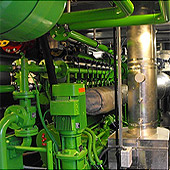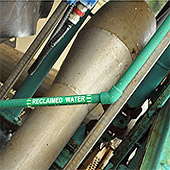Building & Bylaw ServicesCorporate Services Current PlanningDrinking Water & Watershed ProtectionEconomic DevelopmentEmergency ServicesEnergy & SustainabilityGIS/MappingLong Range PlanningParksRecreationRegional TransitSolid Waste and RecyclingWastewater ServicesWater & Utility ServicesServices by Others
Resource Recovery
Resource recovery is the recovery of value from waste resources (e.g. energy generation, water reuse, and nutrient recovery.) Resource recovery is a Regional Priority as outlined in the Liquid Waste Management Plan Amendment. We recognize that water is a shared and interconnected resource, and our waste management decisions affect our neighbours and the water resources we all rely upon. The RDN commits to managing our water resources in an integrated manner. Our decisions will consider potential energy generation, water conservation and reuse, nutrient recovery, greenhouse gas and odour emissions.Revenue from resource recovery offsets the costs of wastewater treatment. Some examples of resource recovery projects implemented or considered for RDN wastewater services include:




Biosolids
Sludge from RDN primary and secondary wastewater treatment processes are further treated to become a beneficial resource termed biosolids. For more information on the RDN Biosolids program, visit the RDN's Biosolids page.Biogas
Biogas (methane and carbon dioxide) is a by-product of wastewater treatment and is a sustainable energy source used at GNPCC to fuel its boilers, heat on-site processes and buildings and to mix the digesters. Excess biogas is used to create electricity (see cogeneration below).Cogeneration
At Greater Nanaimo Pollution Control Centre, a cogeneration unit harnesses waste gas (methane) and converts it into electricity that is sold back into the electrical grid. The cogeneration system is capable of producing 2,000 megawatts of electricity annually which enough to cover the energy demands for roughly 325 households.Reclaimed Water
Reclaimed water is effluent from a municipal wastewater facility that is suitable for use in accordance with the Municipal Wastewater Regulation. French Creek Pollution Control Centre uses effluent during operation as process and wash water. Beneficial effluent reuse lessens the demand on the potable water supply and reduces the volume discharged to the ocean.Heat Recovery
District heating systems capture thermal energy from wastewater effluent to provide hot water and space heating using heat recovery technology. District heating plants can provide higher efficiencies and better pollution control than localized boilers. The RDN has an agreement-in-principle with School District 68 to provide Hammond Bay Elementary School with heat from the new Greater Nanaimo Pollution Control outfall. This project would allow the school district to use the residual heat from the treated wastewater as the primary heat source for the school. This unique system would reduce the school's overall carbon footprint by 78% and its operating cost by $4,800 each year.
Wastewater Services |
6300 Hammond Bay Road |
Nanaimo, BC V9T 6N2 |
E-mail: [email protected]
Telephone: 250-390-6560 (Nanaimo) 250-954-3792 (Oceanside) 1-877-607-4111 (Toll Free)
1-800-862-3429 (Emergency) | 250-390-1542 (Fax)
Telephone: 250-390-6560 (Nanaimo) 250-954-3792 (Oceanside) 1-877-607-4111 (Toll Free)
1-800-862-3429 (Emergency) | 250-390-1542 (Fax)
